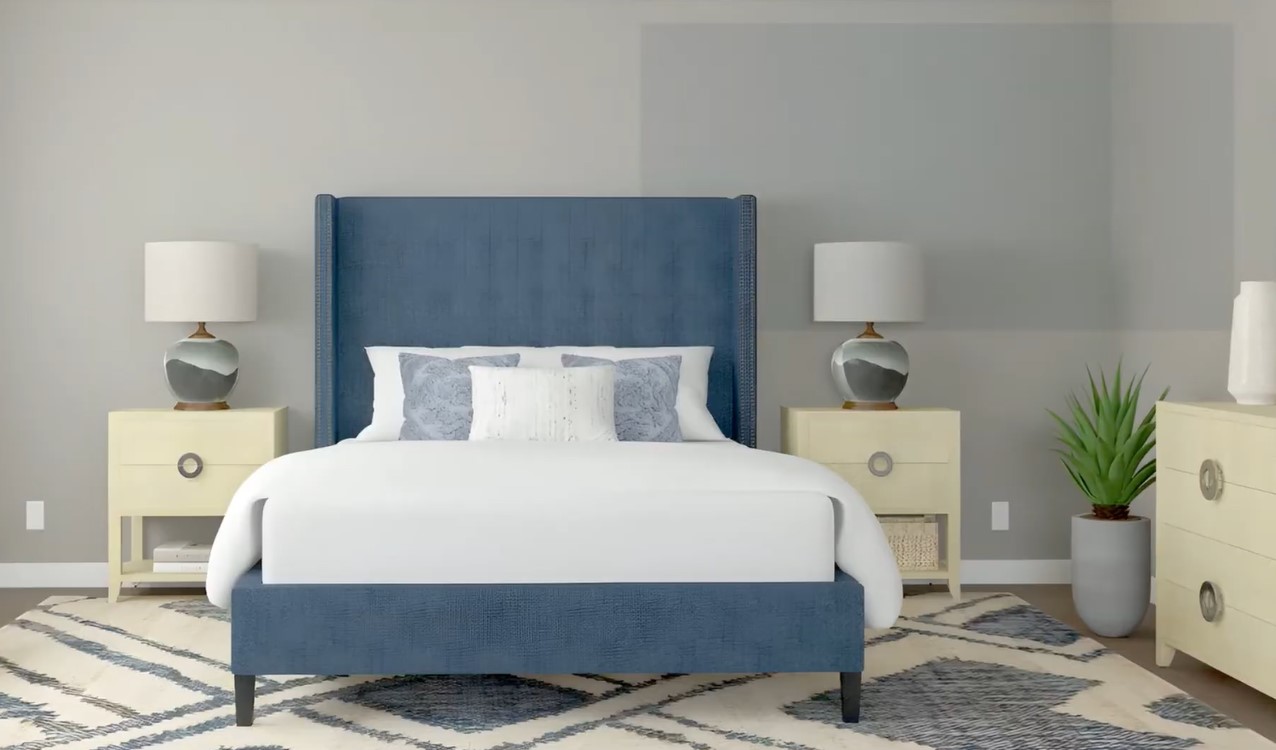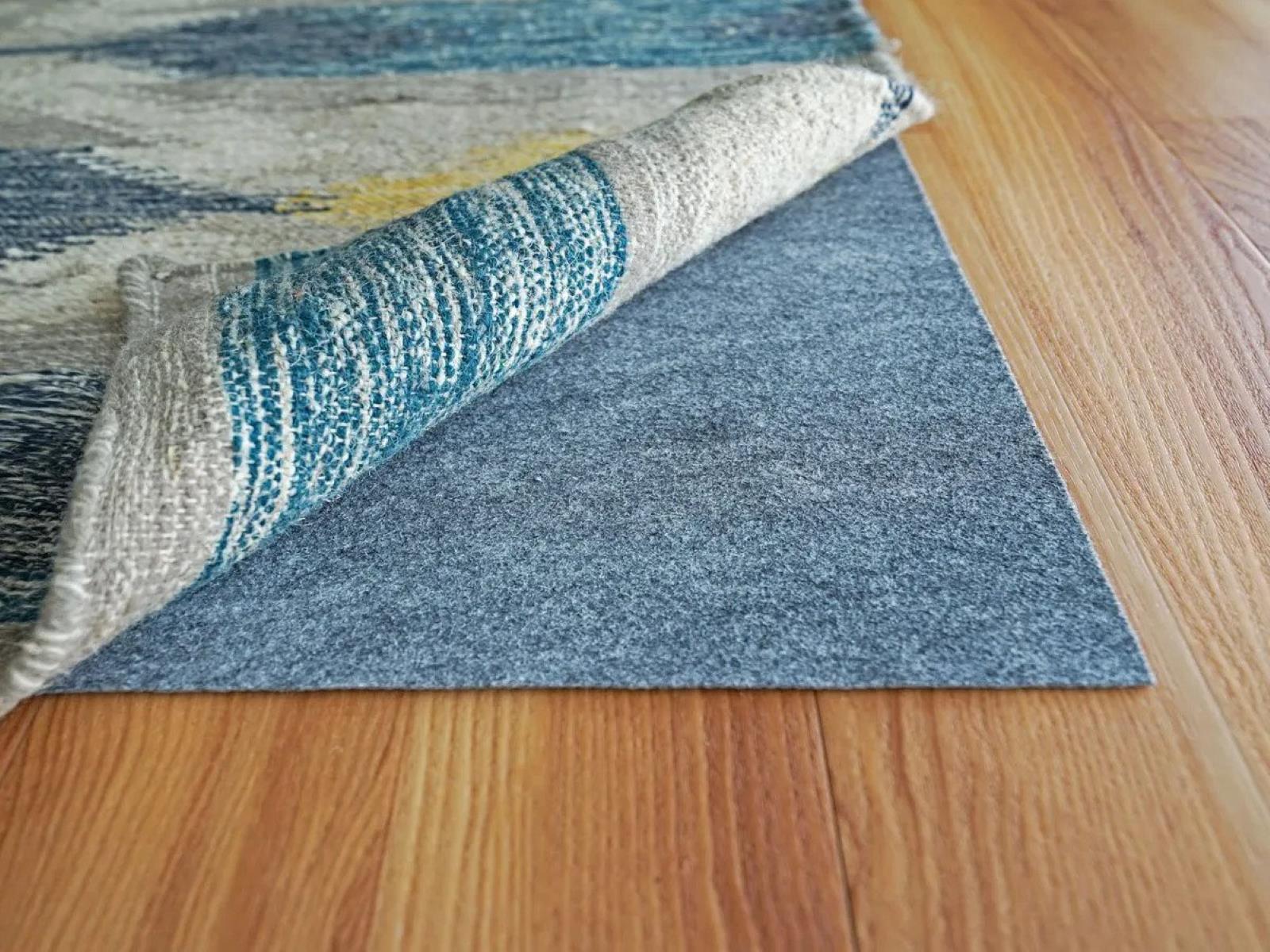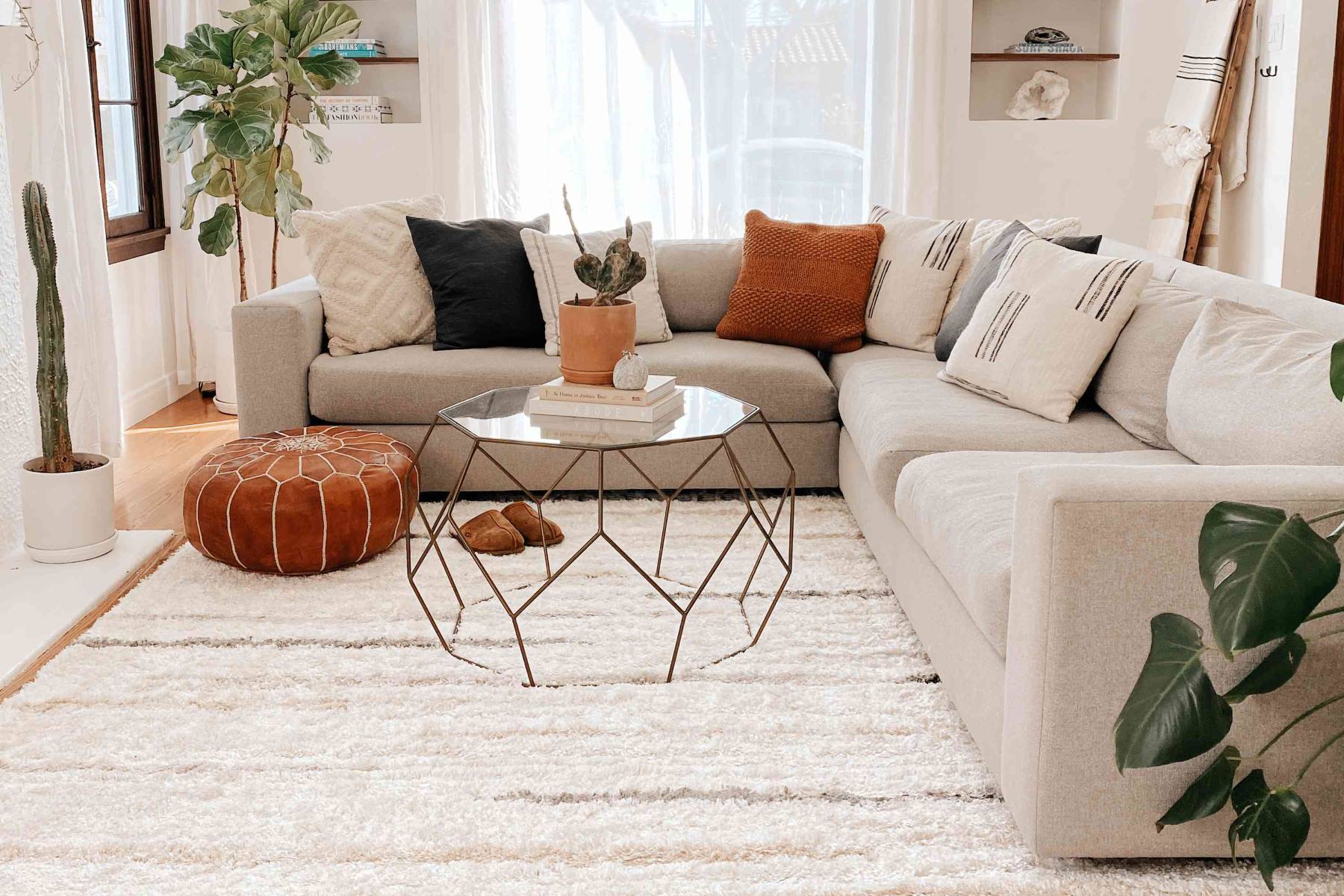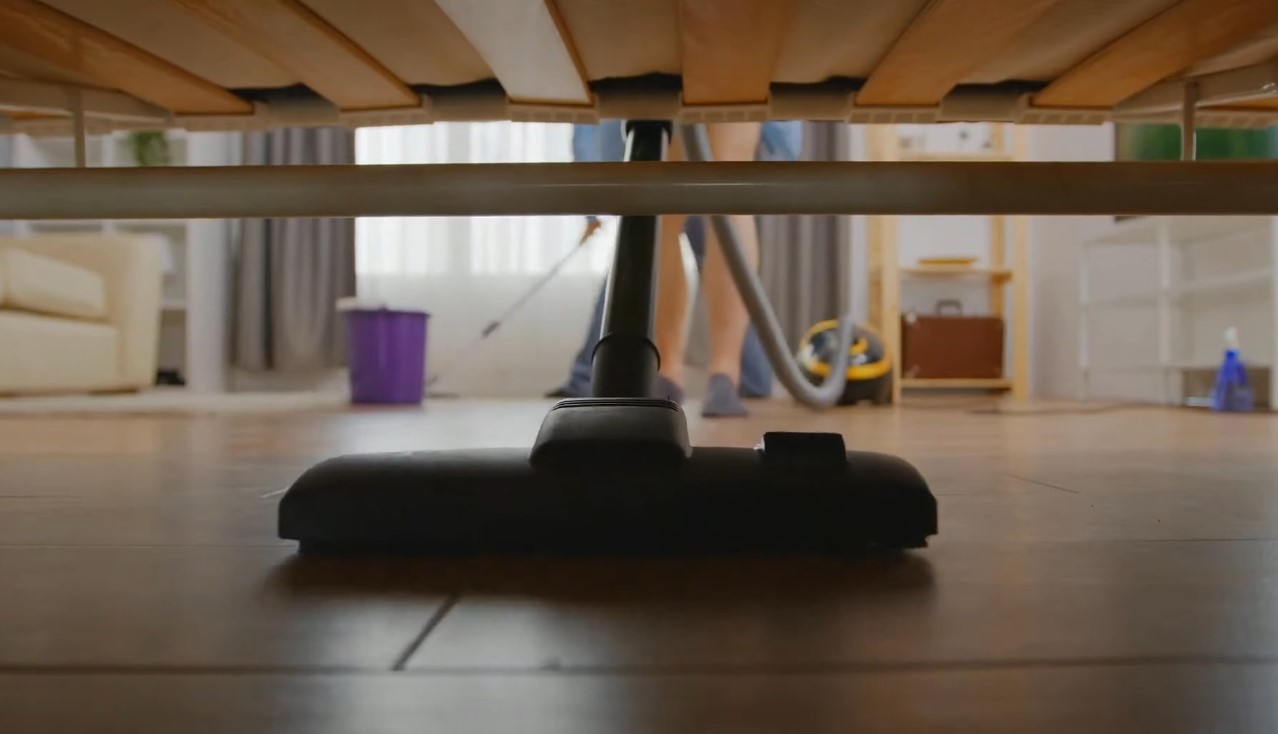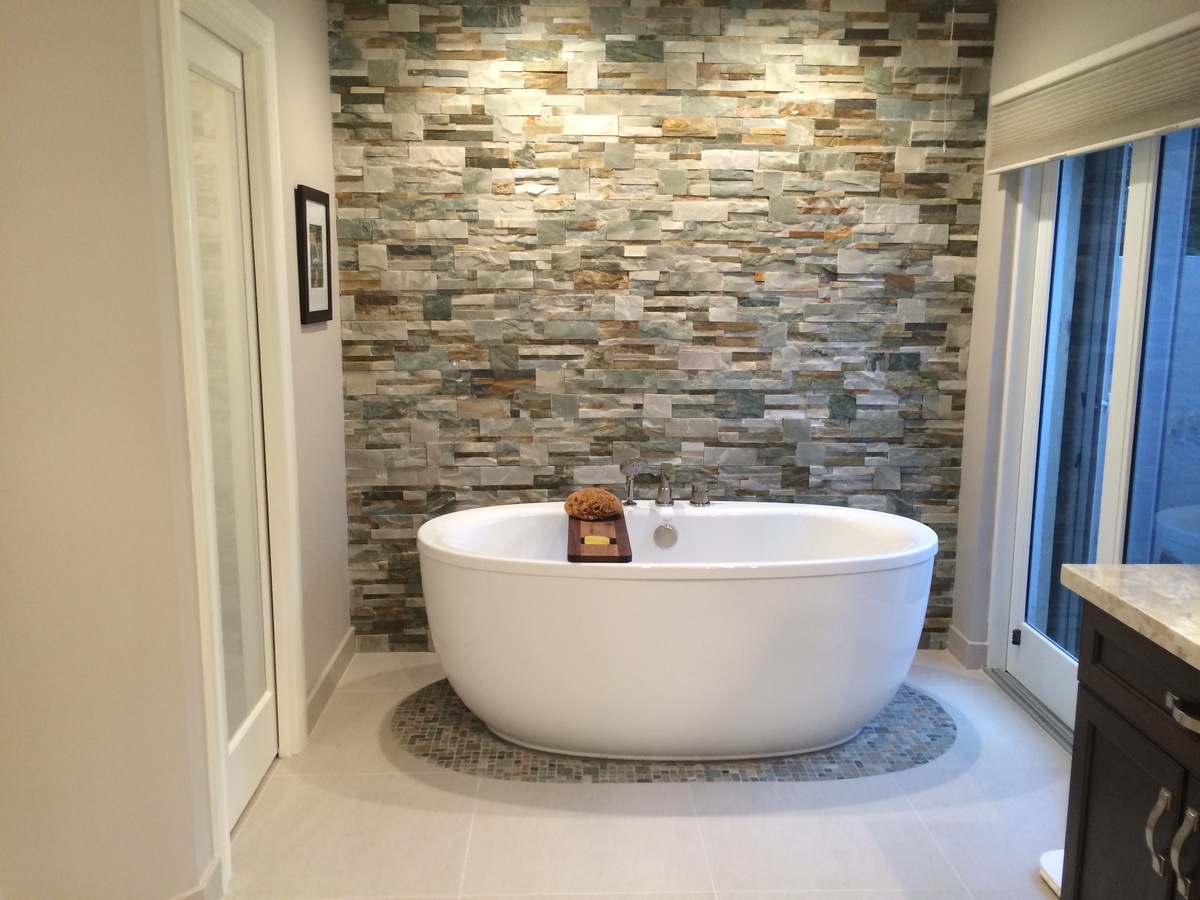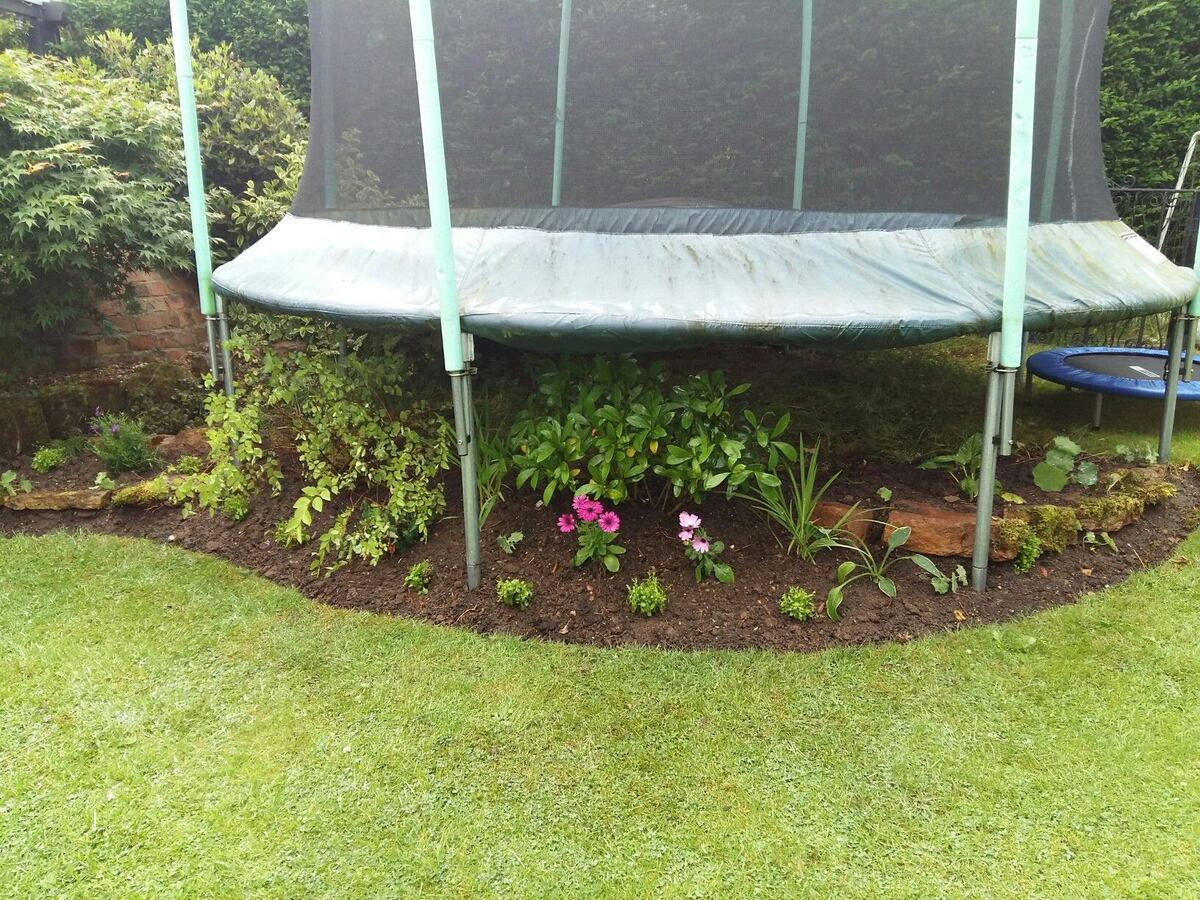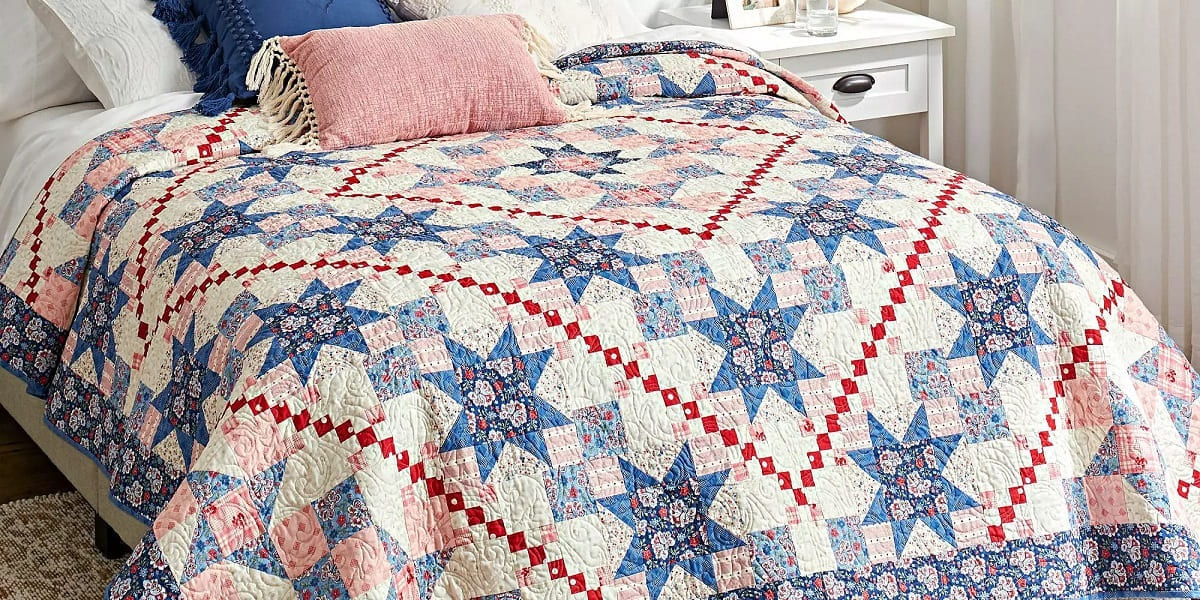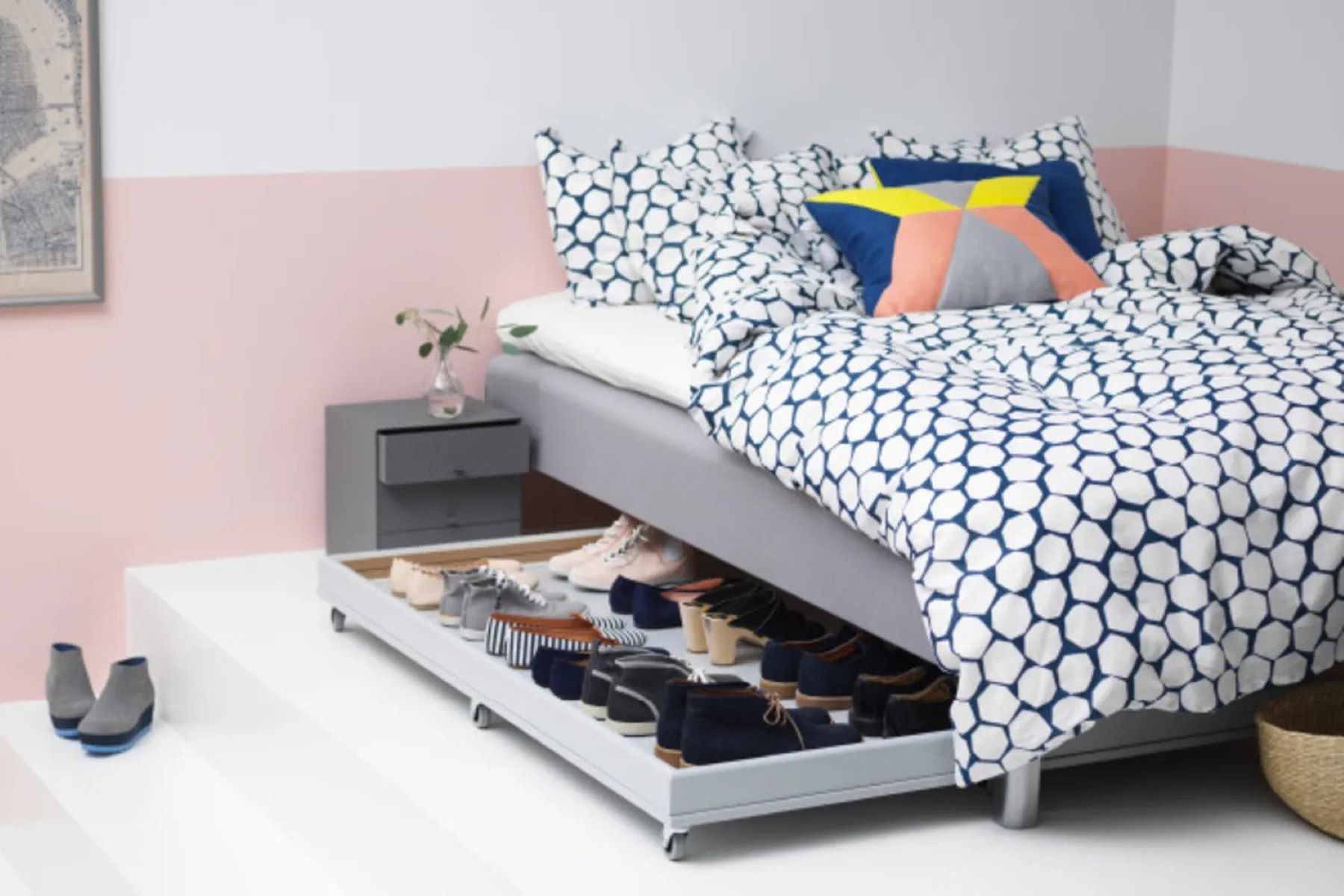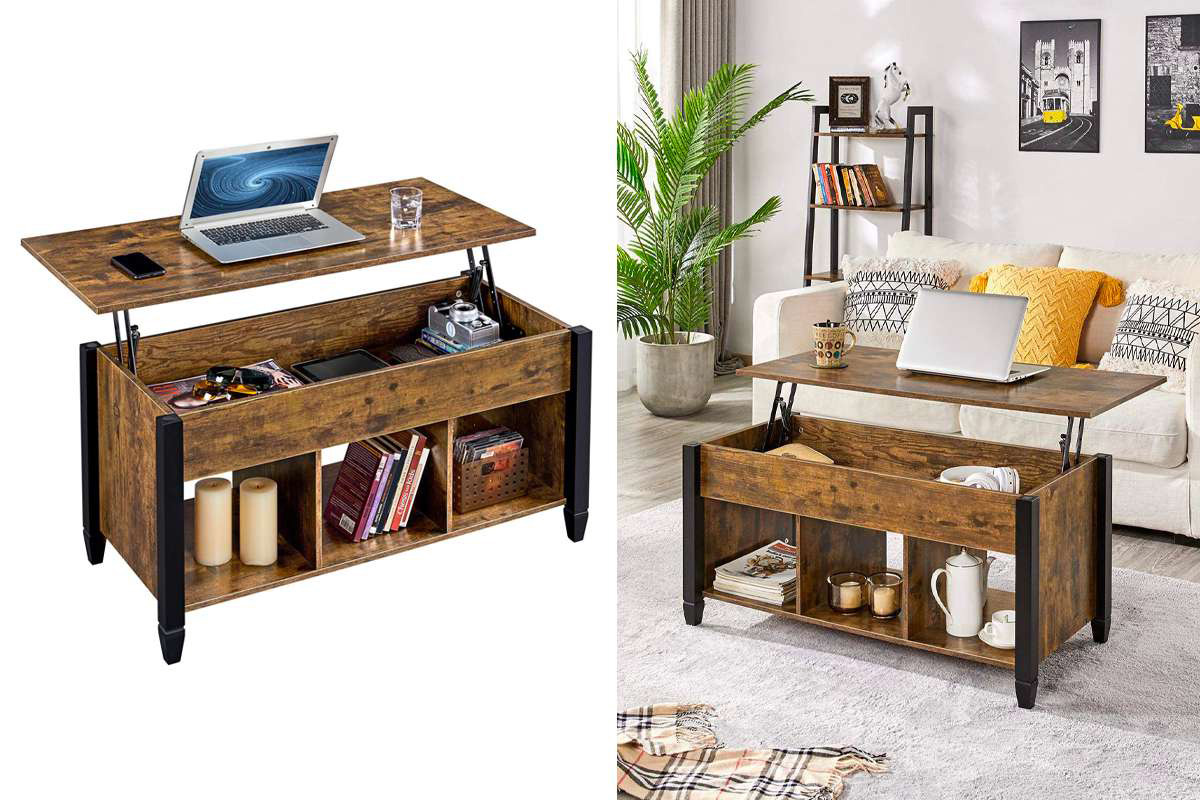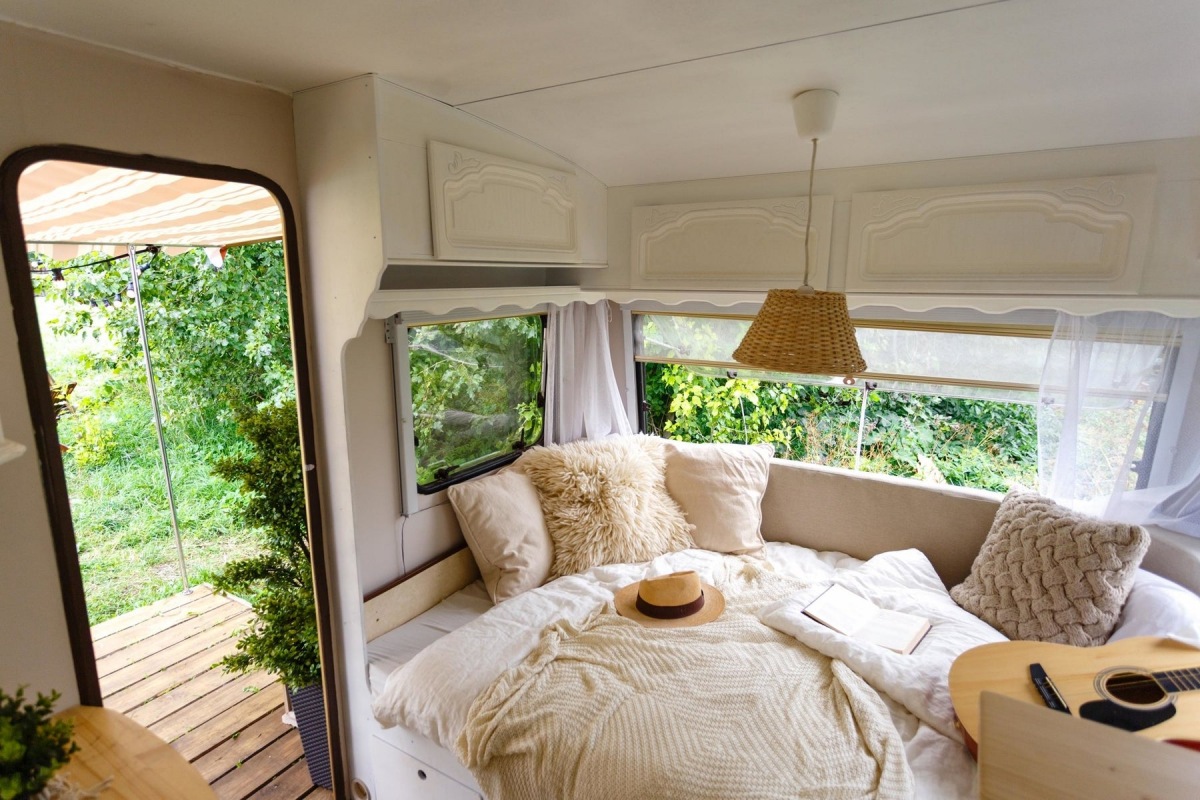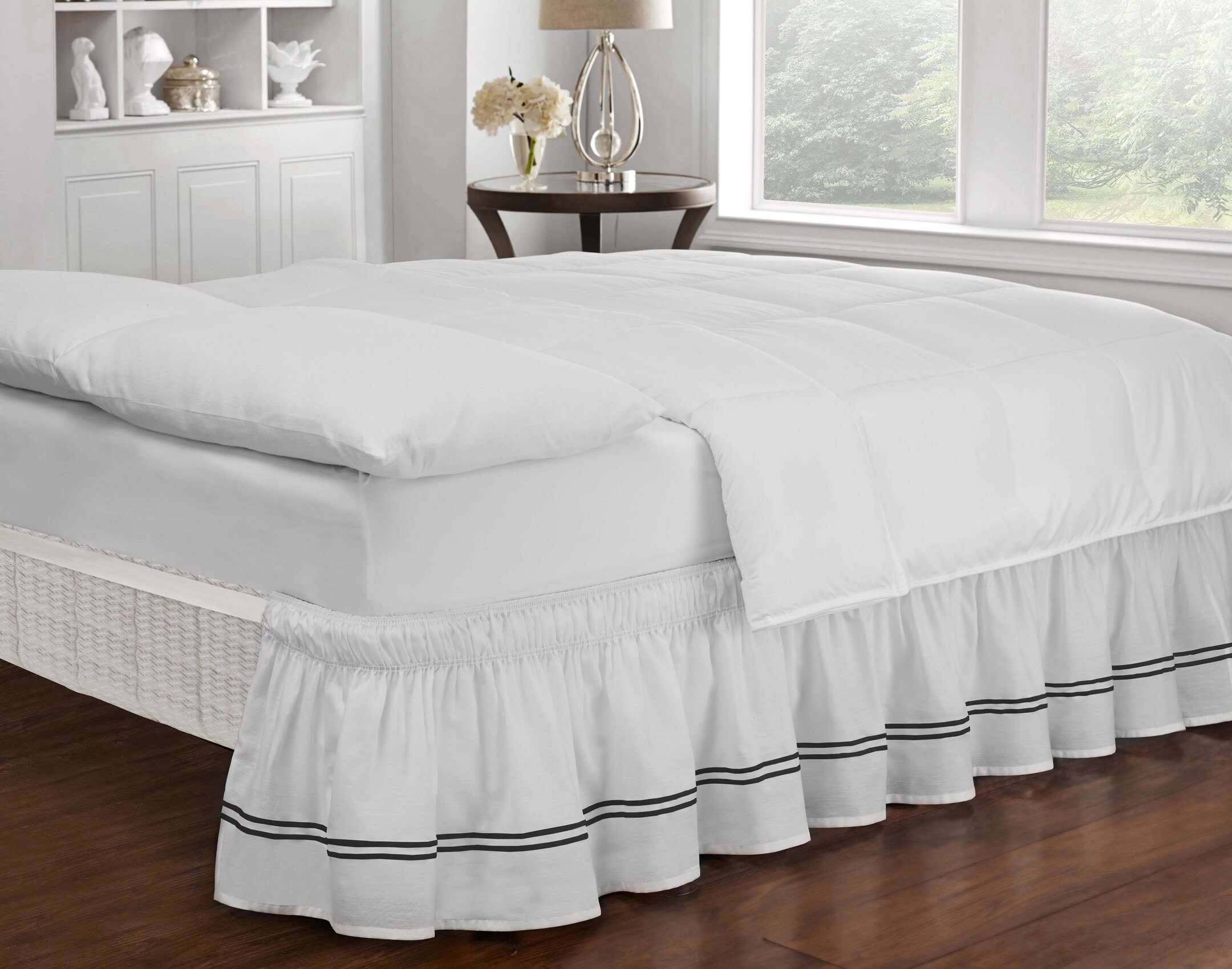Home>Furniture>Bedroom Furniture>How To Put A Rug Under A Bed
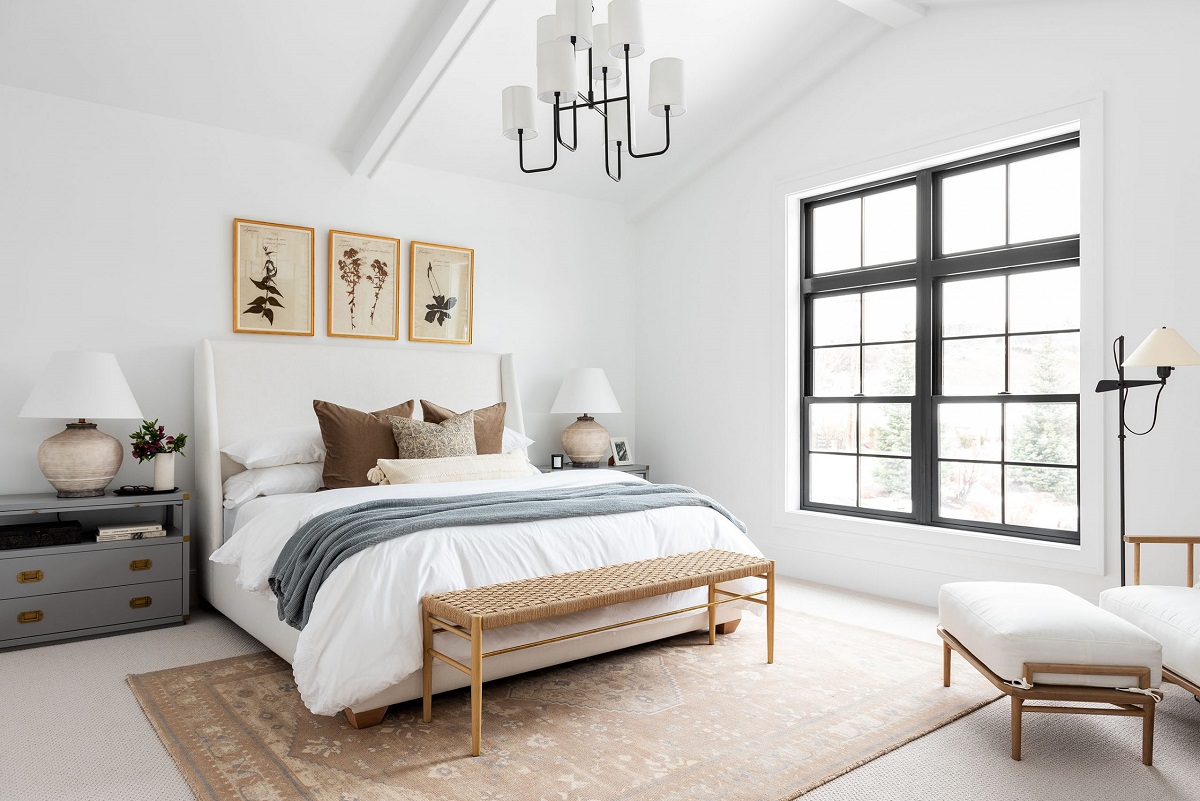

Bedroom Furniture
How To Put A Rug Under A Bed
Modified: May 6, 2024
Discover how to properly position and style a rug under your bed with our comprehensive guide. Enhance your bedroom furniture with our expert tips and tricks.
(Many of the links in this article redirect to a specific reviewed product. Your purchase of these products through affiliate links helps to generate commission for Storables.com, at no extra cost. Learn more)
Introduction
Welcome to our comprehensive guide on how to put a rug under a bed. Adding a rug to your bedroom can instantly elevate the aesthetics of the space and create a cozy and inviting atmosphere. Not only does a rug add visual appeal, but it also has practical benefits, such as providing warmth and comfort underfoot and reducing noise levels.
However, when it comes to placing a rug under a bed, there are a few key considerations to keep in mind. In this article, we will walk you through the process step-by-step, from choosing the right rug to securing it in place. So, let’s dive in and learn how to create the perfect rug placement for your bedroom!
Key Takeaways:
- Elevate your bedroom with a perfectly placed rug that adds warmth, comfort, and style. Choose the right size, material, and style to create a visually appealing and cozy space.
- Secure your rug in place to prevent slipping and shifting. Add final touches like decorative pillows, lighting, and personal elements to complete your dream bedroom sanctuary.
Read more: How To Place Rugs Under Beds
Choosing the Right Rug
The first step in putting a rug under your bed is choosing the right one. Consider the size, material, and style of the rug to ensure it complements the existing decor of your bedroom.
Size: The size of the rug will largely depend on the size of your bed and the layout of your room. Ideally, the rug should extend at least 2-3 feet beyond the edges of the bed. This creates a visually balanced look and provides a soft landing when you step out of bed in the morning.
Material: Bedroom rugs come in a variety of materials, including wool, cotton, synthetic fibers, and more. Consider the level of foot traffic in your bedroom and choose a rug material that is durable and easy to clean.
Style: Select a rug that complements the overall style of your bedroom. Whether you prefer a bold pattern, a neutral tone, or a plush texture, there are endless options to suit your personal taste and decor theme.
Measuring the Space
Before purchasing a rug, it’s essential to measure the space to ensure you get the right size. Start by measuring the dimensions of your bed, including the length and width. This will give you a reference point for selecting an appropriately sized rug.
Next, measure the area around the bed where you want to place the rug. Consider the placement of furniture, such as nightstands or dressers, and ensure that the rug extends beyond these pieces to create a cohesive and balanced look.
Keep in mind any doorways or obstructions that may affect the placement of the rug. You want to ensure that the rug fits comfortably in the room without causing any tripping hazards.
Preparing the Bedroom
Once you have chosen the perfect rug and measured the space, it’s time to prepare the bedroom for the rug installation. Start by removing any existing rugs or furniture from the area where the rug will be placed. This will give you a clear and clean surface to work with.
Additionally, vacuum the floor thoroughly to remove any dirt or debris. It’s important to have a clean surface before placing the rug to prevent any particles from getting trapped beneath it.
If you have hardwood or tiled floors, consider using a rug pad underneath the rug. This provides extra cushioning and prevents the rug from slipping or sliding.
Key Takeaways:
- Elevate your bedroom with a perfectly placed rug that adds warmth, comfort, and style. Choose the right size, material, and style to create a visually appealing and cozy space.
- Secure your rug in place to prevent slipping and shifting. Add final touches like decorative pillows, lighting, and personal elements to complete your dream bedroom sanctuary.
Read more: How To Place Rugs Under Beds
Choosing the Right Rug
Selecting the perfect rug for your bedroom is crucial in creating a harmonious and visually appealing space. Here are some key factors to consider when choosing the right rug:
Size: The size of the rug is an important consideration when placing it under your bed. Ideally, the rug should extend at least 2-3 feet beyond the edges of the bed. This creates a balanced look and provides a comfortable area to step onto when you wake up in the morning.
Before purchasing a rug, measure the dimensions of your bed, including the length and width. This will give you a reference point for selecting an appropriately sized rug. Keep in mind the layout of your room and any furniture pieces you want to place on the rug, such as nightstands or benches. A rug that is too small or too large can throw off the overall proportions of the room.
Material: The material of the rug plays a significant role in its durability, feel, and maintenance. There is a wide range of materials to choose from, including wool, cotton, synthetic fibers, and more.
Wool rugs are known for their durability, softness, and natural resistance to stains and dirt. They are an excellent choice for bedrooms with high foot traffic. Cotton rugs are lightweight, easy to clean, and come in various colors and patterns, making them a versatile option. Synthetic rugs, such as nylon or polyester blends, are often more affordable and resistant to wear and tear.
Style: The style of the rug should complement the overall aesthetic of your bedroom. Consider the existing color scheme and decor theme when selecting a rug. If you have a minimalist bedroom, a solid-colored or neutral-toned rug can add texture and visual interest without overwhelming the space. On the other hand, if you want to make a bold statement, a rug with a vibrant pattern or unique design can become a focal point in the room.
Don’t be afraid to mix patterns and textures within your bedroom decor. A rug with a subtle pattern can complement patterned bedding or drapes, creating a cohesive and visually appealing look. Alternatively, a plush and fluffy rug can add warmth and coziness to a room with sleek and modern furniture.
Comfort: Aside from visual appeal, the comfort factor of the rug should also be taken into consideration. Look for a rug with a thick pile or cushioning that feels soft and plush underfoot. You want to create a cozy and comfortable environment where you can step onto the rug with a sense of luxury and comfort.
By carefully considering the size, material, style, and comfort of the rug, you can choose the perfect one that will enhance the overall aesthetic and atmosphere of your bedroom. Remember, a well-selected rug can transform a space, adding warmth, visual interest, and a touch of comfort to your sanctuary.
Measuring the Space
Accurate measurements are crucial when it comes to placing a rug under your bed. Taking the time to measure the space properly ensures that you select a rug that fits proportionately and enhances the overall aesthetics of your bedroom. Here’s a step-by-step guide on how to measure the space:
1. Measure the Bed: Start by measuring the dimensions of your bed, including the width and length. This will serve as a reference point for determining the appropriate size of the rug. For example, if you have a queen-size bed that measures 60 inches wide and 80 inches long, you’ll need a rug that extends beyond these measurements.
2. Determine the Rug Placement: Consider how you want to position the rug in relation to the bed. Do you want the rug to extend beyond the sides of the bed or have it placed only at the foot of the bed? This will depend on your personal preference and the layout of your bedroom.
3. Measure the Rug Placement Area: Once you have determined the rug placement, measure the area where you plan to place the rug. Start by measuring the length from the footboard to where you want the rug to end. Then, measure the width from one side of the bed to the other, including any additional furniture you want to include on the rug, such as nightstands or benches.
4. Account for Overhang: To ensure a visually pleasing look, it’s recommended to have the rug extend at least 2-3 feet beyond the edges of the bed. This allows for a balanced and proportionate appearance. For example, if you have a queen-size bed that measures 60 inches wide, adding an additional 2-3 feet on each side will require a rug that is at least 96-108 inches wide.
5. Consider Clearance and Obstacles: Take into account any clearance needed for doors, closets, or other furniture pieces in the room. You want to ensure that the rug fits comfortably in the space without causing any obstruction or tripping hazards.
6. Rug Pad: If you have hardwood or tiled floors, consider adding a rug pad underneath the rug. A rug pad provides extra cushioning, prevents slipping, and protects your floor from scratches. Take the thickness of the rug pad into account when measuring the space to ensure a proper fit.
By accurately measuring the space, including the bed dimensions, the desired rug placement, and accounting for overhang and potential obstacles, you can confidently select a rug that fits well and adds a beautiful finishing touch to your bedroom.
Preparing the Bedroom
Before placing a rug under your bed, it’s important to prepare the bedroom to ensure a smooth and successful installation. Taking the time to prepare the room properly will help you achieve the desired result and prevent any complications. Here are some steps to follow when preparing your bedroom:
1. Clear the Space: Start by removing any existing rugs, furniture, or clutter from the area where you plan to place the rug. Clearing the space will provide you with a clean and blank canvas to work with, allowing you to visualize how the rug will fit into the room.
2. Vacuum the Floor: Once the space is clear, thoroughly vacuum the floor to remove any dust, dirt, or debris. It’s important to clean the surface before placing the rug to prevent any particles from getting trapped underneath.
3. Check for Uneven Floors: Take a moment to assess the floor for any irregularities or unevenness. If you notice any dips, bumps, or uneven surfaces, consider addressing these issues before laying down the rug. An even surface will ensure the rug lays flat and doesn’t create any tripping hazards.
4. Protect Your Floors: If you have hardwood, laminate, or tiled floors, it’s advisable to use a rug pad. A rug pad not only provides extra cushioning and prevents slipping, but it also acts as a protective layer between the rug and the floor. It can help reduce wear and tear on your flooring and prevent any potential damage.
5. Position the Bed: Before placing the rug, ensure that the bed is positioned where you want it to be. Once the rug is in place, it may be difficult to move the bed without readjusting the rug as well. Take the time to arrange the bed exactly how you desire before proceeding.
6. Lay Down the Rug: With the area prepared, it’s time to lay down the rug. Start by positioning the rug in the desired location, making sure it is centered and aligned with the bed. If necessary, have someone assist you in aligning the rug properly.
7. Smooth Out the Rug: Once the rug is in position, smooth out any wrinkles or creases to ensure it lays flat. You can use your hands or a broom to gently smooth out the rug from the center towards the edges.
8. Arrange Furniture: After the rug is properly laid down, you can begin arranging any additional furniture pieces, such as nightstands, benches, or chairs, on the rug. Ensure that the furniture is positioned in a way that creates a harmonious and balanced look in the room.
By following these steps to prepare your bedroom, you can create an ideal foundation for placing the rug under your bed. Adequate preparation will help ensure a seamless installation process, allowing you to fully enjoy the enhanced aesthetics and comfort the rug brings to your space.
Moving the Bed
Now that you have prepared your bedroom and positioned the rug, it’s time to move the bed onto the rug. Moving a bed can be a challenging task, but with proper planning and technique, it can be done safely and efficiently. Here’s how to move your bed onto the rug:
1. Clear the Bed: Before moving the bed, remove all bedding, pillows, and any other items on the bed. This will make the bed lighter and easier to handle during the moving process.
2. Enlist Help: Moving a bed is typically a two-person job, especially if the bed is heavy or bulky. It’s best to enlist the help of a friend or family member to ensure a smooth and safe transition.
3. Lift and Slide: With your helper, stand at the sides of the bed, facing each other. Bend your knees and lift the bed slightly off the floor, being mindful of your back and using your leg muscles for support. Slide the bed in the direction of the rug, ensuring that the bed legs don’t catch on the floor or carpet.
4. Position the Bed: Carefully lower the bed onto the rug, making sure all legs of the bed are resting on the rug. If necessary, adjust the position of the bed to align it with the rug and properly center it in the room.
5. Test Stability: Once the bed is on the rug, check that it is stable and doesn’t wobble. Gently shake the bed to ensure it is properly positioned on the rug. If there is any instability, adjust the leg placement or double-check if the rug is aligned correctly.
6. Adjust the Rug: If the rug has shifted during the moving process, reposition it to ensure it is centered and properly aligned under the bed. Smooth out any wrinkles or folds in the rug, making sure it lies flat and evenly beneath the bed.
7. Reassemble the Bed: Once the bed is in its final position on the rug, you can begin reassembling it. Start by placing the mattress back on the bed frame and then add any additional layers, such as a mattress topper or protective cover. Finally, make the bed with fresh sheets, pillows, and bedding to complete the setup.
Remember to take your time when moving the bed to prevent any injuries or damage to the furniture or flooring. If you have a particularly large or heavy bed, you may want to consider using furniture sliders or asking for professional assistance.
By following these steps, you can successfully move your bed onto the rug and create a visually cohesive and comfortable space in your bedroom.
Placing the Rug
Now that your bed is on the rug, it’s time to focus on properly placing the rug in relation to the bed and the overall layout of your bedroom. Placing the rug in the right position will enhance the visual appeal of the room and create a defined space. Here’s how to place the rug:
1. Center the Rug: Start by ensuring that the rug is centered under the bed. Measure the rug from the sides and the foot of the bed to make sure it is evenly positioned. This will create a balanced and symmetrical look, making the bed the focal point in the room.
2. Align with the Bed: The rug should be aligned with the edges of the bed, meaning it should extend evenly beyond all sides of the bed. Aim for a border of about 2-3 feet around the bed, allowing for a comfortable landing when stepping off the bed in the morning.
3. Consider Furniture Placement: Take into account any additional furniture in the room, such as nightstands or seating areas. Ideally, the rug should extend under these pieces as well for a cohesive and connected look. Make sure the furniture legs are partially or completely on the rug to visually tie everything together.
4. Symmetry and Balance: Achieve a balanced and symmetrical look by ensuring the rug is evenly placed. Measure the distance from the rug to the surrounding walls and adjust accordingly to maintain a consistent and visually pleasing border.
5. Define the Space: Placing the rug under the bed helps define the sleeping area and creates a visual separation from the rest of the room. This can be particularly useful if you have an open-concept bedroom or if you want to create a cozy nook within a larger space.
6. Consider the Rug Material: Keep in mind the material and thickness of the rug when placing it. For example, if you have a thick, plush rug, consider leaving a slight border between the rug and any surrounding walls or furniture to prevent a visually crowded or overwhelming look.
7. Visualize the Final Look: Step back and take a moment to visualize the final look of the room with the rug in place. Make any necessary adjustments to achieve the desired aesthetics and ensure that the rug placement enhances the overall ambiance of the bedroom.
By taking the time to properly place the rug, you can create a visually appealing and harmonious space in your bedroom. The rug will add warmth, texture, and define the sleeping area, all while complementing the overall decor of the room.
Read more: What Size Rug Under King Bed
Securing the Rug
Securing the rug in place is an important step to prevent it from shifting or slipping, ensuring a safe and stable environment in your bedroom. Here are some methods to securely hold the rug in place:
1. Rug Grippers: Rug grippers or anti-slip pads are adhesive strips or pads that can be placed underneath the rug to prevent it from sliding. These grippers adhere to both the rug and the floor, creating a secure bond that keeps the rug in place. They are typically made of a non-slip rubber material that provides a strong grip.
2. Rug Tape: Rug tape is another option to consider. It is a double-sided adhesive tape specifically designed for rugs. You can apply the tape along the edges or corners of the rug, sticking it to the floor to anchor the rug securely. Rug tape works well on both hard surfaces and carpeted floors.
3. Rug Pad: If you haven’t already, consider using a rug pad underneath the rug. Rug pads not only provide extra cushioning and comfort but also help prevent the rug from slipping. The pad adds an additional layer of grip between the rug and the floor, keeping it in place.
4. Furniture Weight: Positioning heavy furniture, such as the bed, nightstands, or dressers, on top of the rug can also help secure it. The weight of the furniture helps hold the rug in place, preventing it from sliding or shifting. Make sure the furniture legs are properly positioned and partially on the rug to provide further stability.
5. Velcro Strips: For rugs that are larger or extend under heavy furniture, using velcro strips can provide additional security. Attach one side of the velcro to the underside of the rug and the corresponding side to the floor or furniture legs. This will create a strong connection, preventing the rug from moving.
6. Regular Maintenance: Regularly vacuuming the rug and the surrounding area will help maintain its condition and prevent any debris from accumulating. A clean rug is less likely to shift or slide. Additionally, periodically check the rug placement and readjust if necessary to ensure it remains in position.
By using rug grippers, tape, rug pads, or even the weight of furniture, you can effectively secure the rug in place. These methods will provide stability, prevent slips and trips, and ensure that your bedroom rug stays in its desired position, enhancing the overall safety and aesthetics of the space.
Final Touches
With the rug secured in place, it’s time to add the final touches to complete the look and enhance the overall ambiance of your bedroom. Consider these final touches to elevate the style and comfort of the space:
1. Decorative Pillows and Throws: Add decorative pillows and throws to your bed for a touch of coziness and style. Choose pillows and throws that complement the colors and patterns of the rug and the overall bedroom decor. Mix and match textures and patterns to create visual interest.
2. Bedside Rugs: If you have nightstands flanking your bed, consider placing smaller accent rugs on either side. These bedside rugs can provide a soft and comfortable surface for your feet when you wake up in the morning. Coordinate the bedside rugs with the main rug for a cohesive look.
3. Lighting: Enhance the ambiance of your bedroom with appropriate lighting choices. Consider adding a bedside table lamp or wall sconces to provide task lighting for reading or create an intimate atmosphere. Lighting fixtures that complement the style of the room can also serve as decorative elements.
4. Wall Decor: Choose artwork, mirrors, or wall decor that complements the color palette and style of your bedroom. These accents will add a personal touch and help tie the room together. Hang them at eye level or above the bed to create a focal point.
5. Window Treatments: Complete the look of your bedroom by adding stylish window treatments. Consider curtains, blinds, or shades that match the color scheme and provide privacy, light control, and insulation. Choose materials and patterns that complement the overall decor of the room.
6. Plants and Greenery: Bring in some natural elements by adding plants or greenery to your bedroom. Not only do they add a refreshing touch, but they also improve air quality and create a calm and serene environment. Choose plants that thrive in low-light conditions if your bedroom doesn’t receive ample sunlight.
7. Coordinate Bedding: Complement the rug and overall color scheme of your bedroom by coordinating your bedding. Choose sheets, duvet covers, and pillowcases that match or complement the tones and patterns in the room. Create a cohesive and inviting bed by layering different textures and patterns.
8. Personal Touches: Finally, don’t forget to add personal touches to make your bedroom truly feel like your own sanctuary. Display family photos, heirlooms, or sentimental items that have special meaning to you. Incorporate elements that reflect your personality and make you feel relaxed and at home.
By paying attention to these final touches, you can create a bedroom space that is not only visually appealing but also reflects your unique style and personality. Take the time to curate and arrange these elements, and you’ll have a bedroom that offers both comfort and a pleasing aesthetic.
Conclusion
Congratulations! You have successfully learned how to put a rug under a bed and transform your bedroom into a cozy and visually appealing space. By following the steps outlined in this comprehensive guide, you can confidently choose the right rug, measure the space accurately, and securely place the rug in its desired position.
A well-chosen rug adds warmth, comfort, and style to your bedroom. It sets the foundation for the overall decor and creates a defined space within the room. The rug also provides a soft landing when you step out of bed in the morning, making your mornings a little more enjoyable.
Remember, when choosing a rug, consider the size, material, and style that best fit your bedroom decor. Measure the space carefully to ensure the rug is proportionate and properly aligned under the bed. Preparing the bedroom by clearing the space, vacuuming the floor, and protecting the floors with a rug pad will set the stage for a successful rug placement.
Moving the bed onto the rug requires careful lifting and sliding techniques, while securing the rug in place prevents any shifting or slipping. Utilize rug grippers, tape, furniture weight, or rug pads to keep the rug securely anchored. And don’t forget to add those final touches, such as decorative pillows, lighting, and window treatments, to enhance the overall look and feel of your bedroom.
With these steps completed, you can enjoy a beautifully transformed bedroom. Take pride in your newly decorated space and make it your own by incorporating personal touches and elements that bring you joy. Your bedroom should be a sanctuary, an oasis of comfort and relaxation, and the addition of a well-placed rug contributes to this ambience.
Thank you for joining us on this journey to learn how to put a rug under a bed. We hope this guide has provided you with valuable insights and practical tips. Embrace your creativity, experiment with different rug styles and textures, and have fun curating your dream bedroom with the perfect rug!
Curious about stepping up your home's style with new trends in floor decor? Our upcoming article on area rugs showcases a selection of attractive options that promise to transform any room. Whether you're looking to refresh your living space or add a splash of color to your bedroom, these rugs offer both comfort and elegance. Don't miss out on finding your perfect match that complements your aesthetic and meets your functional needs.
Frequently Asked Questions about How To Put A Rug Under A Bed
Was this page helpful?
At Storables.com, we guarantee accurate and reliable information. Our content, validated by Expert Board Contributors, is crafted following stringent Editorial Policies. We're committed to providing you with well-researched, expert-backed insights for all your informational needs.
